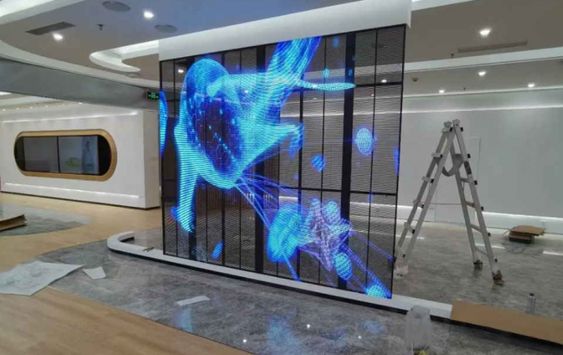1. Introduction
- Define LED screens and their significance in modern visual communication.
- Introduce the importance of proper installation for optimal performance.
2. Pre-Installation Preparation
- Assess the installation site: indoor or outdoor, size, lighting conditions, viewing distance, etc.
- Conduct a thorough site survey to identify potential obstacles, power sources, and structural considerations.
3. Planning and Design
- Develop a detailed installation plan including screen placement, mounting method, cabling, and power requirements.
- Create a CAD drawing or digital mockup to visualize the final installation.
4. Equipment and Tools
- Gather necessary equipment such as mounting brackets, cables, power sources, and safety gear.
- Ensure you have the right tools for the job, including drills, screwdrivers, wrenches, and measuring tools.
5. Installation Process
- Prepare the mounting surface by ensuring it’s clean, flat, and structurally sound.
- Install mounting brackets or frames securely, following manufacturer guidelines and local regulations.
- Carefully handle LED panels during installation to avoid damage.
- Connect panels, power sources, and control systems according to specifications.
- Conduct thorough testing and calibration to ensure proper functionality.
6. Safety Considerations
- Prioritize safety by following all relevant safety guidelines and using appropriate personal protective equipment (PPE).
- Secure cables and wires to prevent tripping hazards and electrical accidents.
- Ensure proper grounding and electrical safety measures are in place.
7. Post-Installation Calibration
- Fine-tune settings such as brightness, contrast, color balance, and refresh rates for optimal visual performance.
- Conduct on-site testing with different content types to ensure clarity, color accuracy, and smooth playback.
- . Launching Your 3D Advertising Campaign
- Coordinate launch activities, promotions, and media coverage to maximize campaign reach and impact.
- Monitor campaign performance in real-time and make adjustments as needed to optimize results.
- 9. Measuring Success and ROI
- Track KPIs such as audience engagement, brand recall, conversion rates, and revenue generated from the 3D advertising campaign.
- Analyze data and feedback to assess campaign effectiveness and calculate return on investment (ROI).
- 10. Case Studies and Success Stories
- Highlight successful 3D advertising campaigns and their impact on brand awareness, customer engagement, and sales growth.
- Showcase innovative uses of 3D advertising displays in various industries and settings.
8. Maintenance and Troubleshooting
- Develop a maintenance schedule for regular cleaning, inspection, and software updates.
- Train personnel on basic troubleshooting techniques and procedures for quick resolution of common issues.
9. Compliance and Regulations
- Adhere to local regulations, building codes, and safety standards led screen installation
- Obtain necessary permits and approvals before commencing installation work.
10. Documentation and Handover
- Document the installation process, including plans, diagrams, testing results, and maintenance procedures.
- Provide training to end-users on operating the LED screen and troubleshooting common issues.
11. Conclusion
- Recap the key steps and considerations for successful LED screen installation.
- Emphasize the importance of proper planning, safety measures, and ongoing maintenance for optimal performance and longevity.

